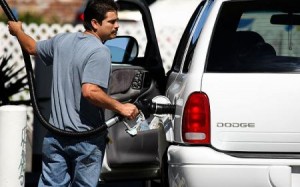The oil loving Wall Street Journal (WSJ) published an article today about the “peak of gasoline”. Many analysts are predicting that with the rise in biofuels production, fuel economy and gasoline prices (although they are holding steady around $2.00 per gallon on average) and the current depressed state of the economy, we’ve seen “peak” gasoline use, at least in the U.S.
According to information released by the U.S. Energy Information Administration (EIA), drivers pumped 371.2 million gallons of non-ethanol gas every day in 2007. EIA anticipates a 6.9 percent decrease in 2009 to 345.7 million gallons, citing reduced gasoline demand and increased use of ethanol blends. Although some sources report that gasoline use today is higher than last summer, the EIA predicts that future gasonline demand will never exceed 2007 levels.
In addition, WSJ reports that, “Demand for all petroleum-based transportation fuels — gasoline, diesel and jet fuel — fell 7.1% last year, according to the EIA. This is the steepest one-year decline since at least 1950, as far back as the federal government has reliable data.”
This is great news for ethanol producers, especially as there are an estimated 300 million gallons of cellulosic ethanol ready and waiting to enter the fuel market. The historical barriers to an increased market for ethanol have been lack of infrastructure for E85 and mid-level blends and the need to raise the ethanol blend wall. Last month the ethanol industry joined together to file an E15 waiver, which is currently under EPA review and there is talk about the possiblity of biofuels infrasture funding from the federal government.
In the meantime, it appears that Big Oil is taking the decrease in gasoline production to heart and is activiely pursuing entry into the biofuels market.

